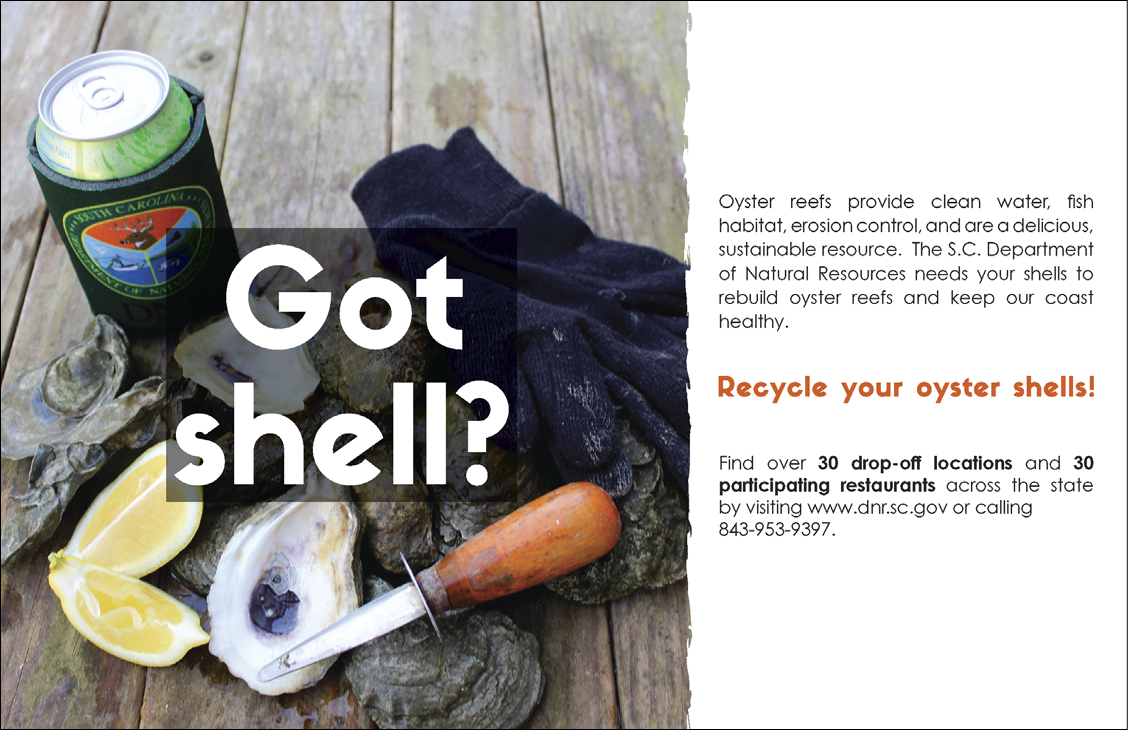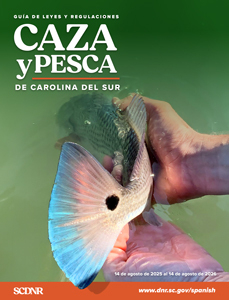Crustacean & Shellfish Methods & Devices
When fishing for crustaceans or shellfish, a Saltwater Recreational Fishing License is required — unless you are using 3 or fewer drop nets, 3 or fewer fold up traps, or 3 or fewer handlines with no hooks and a single bait per line (chicken necking); or shrimp baiting (which requires a shrimp baiting license).
Crab Pots
Permits/Licenses
Saltwater Recreational Fishing License required.
Restrictions
- Licensee can fish no more than two pots recreationally without a recreational crab trap endorsement or five pots with a recreational crab trap endorsement. A Commercial Saltwater Fishing License, Vessel Decal, and Gear license are required for over five pots.
- A two-chambered pot or trap used for taking blue crab must have at least two unobstructed, circular escape vents (rings) which must be two and three-eighths inches or greater in inside diameter and be located on vertical surfaces. At least one vent (ring) must be in the upper chamber and all vents (rings) must be within two inches of the horizontal partition or the base of the trap. If a pot or trap has a single chamber, one escape vent (ring) of at least two and thee-eighths inches or larger is required on a vertical surface within two inches of the base of the trap.
- If unattended each pot float must bear the name and address or license number of owner.
- No crab pot shall be left unattended in coastal waters more than 5 days.
- No crab trap or pot may be set within 200 yards of a public boat landing or launching area or set so as to be left dry at low tide.
- A float attached to a crab pot or trap must be made of solid, buoyant material which does not sink upon being punctured or cracked. The floats must be constructed of plastic, PVC Spongex, plastic foam, or cork. The primary float for a recreational pot or trap must be yellow in color and at least ten inches in length if rectangular, cylindrical, or conical and at least five inches in diameter or width. Round or spherical floats must be at least six inches in diameter. Buoy lines for crab pots must be made of nonfloating material.
- Retaining blue crabs caught in the freshwater of the state is prohibited; any blue crabs caught must be returned to the waters immediately.
Shellfish (Oysters, Clams, Mussels, Whelks, and other Mollusks)
Permits/Licenses
Saltwater Recreational Fishing License required.
Season
Typically open Oct. 1 through May 15 (1/2 hour before sunrise to 1/2 hour after sunset.) Call 843-953-9300 for season dates.
Restrictions
- Shellfish may be harvested recreationally from State shellfish grounds and Public shellfish grounds. Public and State shellfish grounds are marked with signs. Recreational harvesting is allowed on culture permit grounds (formerly leases), but only when the harvester has in possession written permission from the culture permit holder. License must be in possession while harvesting.
View maps of designated shellfish harvesting areas open for recreational gathering by visiting the SCDNR Shellfish Maps page, calling 843-953-9854, or writing to Marine Resources, P.O. Box 12559, Charleston, SC 29422.
Shrimp Seines
Permits/Licenses
Saltwater Recreational Fishing License required.
Restrictions
- Maximum length of shrimp seine 40 feet, maximum depth 6 feet, minimum mesh size, 1/2 inch square (1 inch stretch), maximum mesh size 7/8 inch square (1.75 inch stretch).
- Tail bags or pockets are not allowed on seines when pulled by hand.
- Staked seines are considered commercial channel net devices; allowances and restrictions are provided with the purchase of a commercial license.
Trawling
Permits/Licenses
Commercial Saltwater Fishing License, Vessel Decal and Gear license required.
Restrictions
- Trawling for personal use is restricted to the same license requirements, areas and seasons as commercial trawling. This information is provided with the license.
Shell Recycling
Oyster shells are collected throughout the coastal area and reused for maintenance of public grounds. You can find oyster shell recycling drop-off sites by calling 843-953-9300 or visiting the Oyster Recycling and Restoration page on the South Carolina Saltwater Recreational Fishing License Program website

Guidelines for Sea Turtle Protection
If you hook or entangle a sea turtle while fishing, contact South Carolina DNR Hotline: 1-800-922-5431. For more details, see the comprehensive guidelines at the SC DNR Sea Turtle Handling/Release Guidelines PDF.
- Keep hands away from turtle’s mouth and flippers.
- Do not lift the turtle by the hook or by pulling on the line.
- Safely land the turtle using a net or by walking it to shore.
- Leave the hook in place with three foot of line, as removing it can cause more damage.
- Keep the turtle out of direct sunlight and cover with damp towel.
- Use non-stainless, barbless hooks when possible.
If circumstances don’t permit you to hold the animal and contact SCDNR, cut the line as short as possible and release the turtle.


